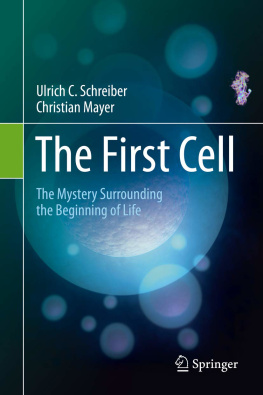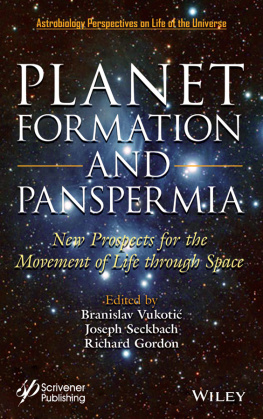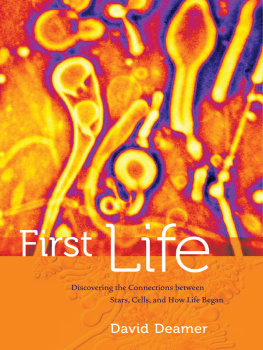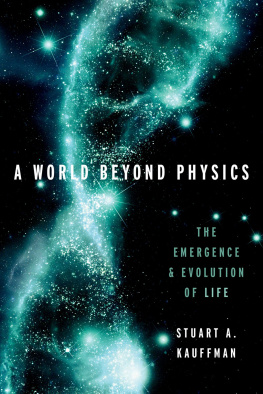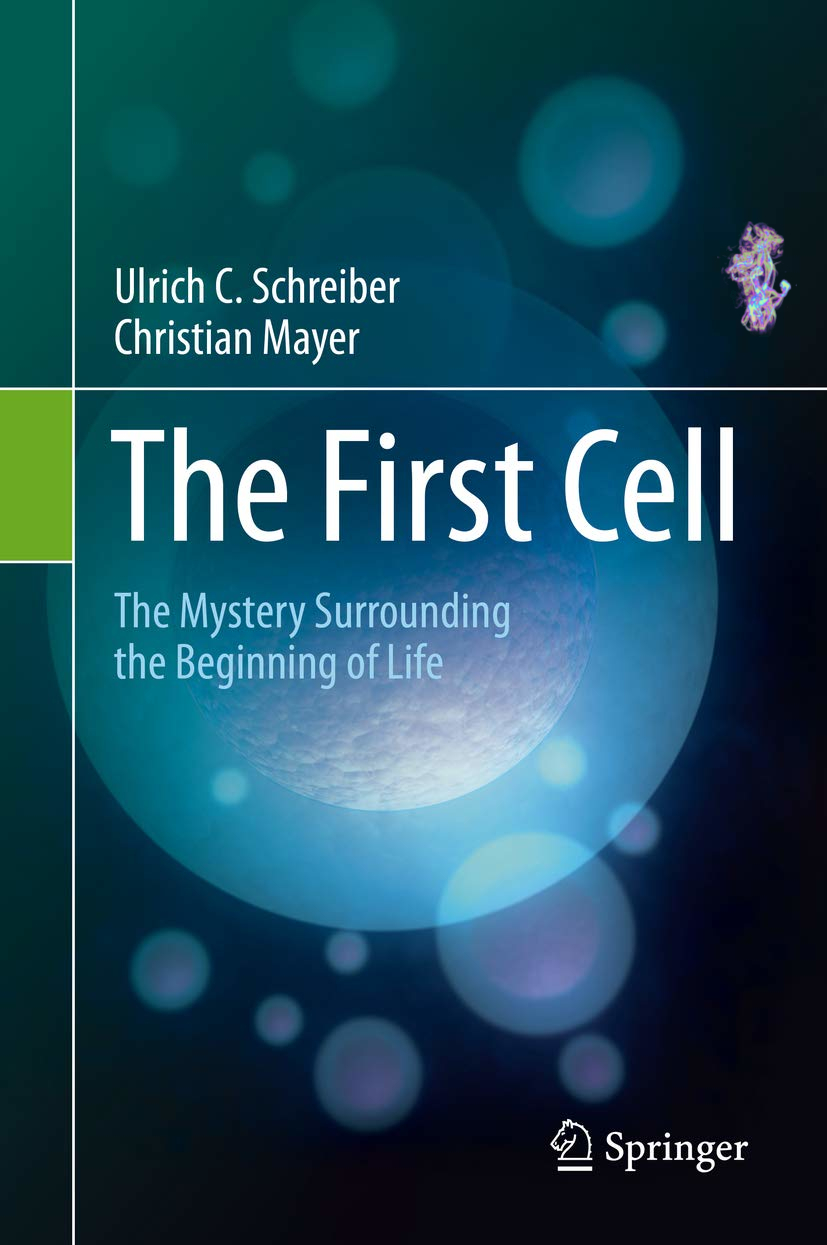Ulrich C. Schreiber and Christian Mayer
The First Cell
The Mystery Surrounding the Beginning of Life
Ulrich C. Schreiber
Faculty for Biology, University of Duisburg-Essen, Essen, North Rhine-Westphalia, Germany
Christian Mayer
Faculty for Chemistry, University of Duisburg-Essen, Essen, North Rhine-Westphalia, Germany
ISBN 978-3-030-45380-0 For more FREE books, go to:
www.textseed.xyz
.
.
.
.
For Karin, Hanna, and Sebastian
Preface to the English Edition
The following book tries to offer a comprehensive model for the formation of the first living cell. Its ideas have been formed during cooperation between the two authors over many years. The original edition, appearing as a non-fiction book in German, described the complex topic from a personal perspective of one of the authors (U.C. Schreiber).
The idea to write a non-fiction book on the topic of the origin of life was born on the results of laboratory experiments which prove the occurrence of a chemical evolution under environmental conditions. These experiments opened an opportunity to follow the development from simple organic molecules up to complex structures with particular functions. Based on this stage during the completion of the first edition, it was planned to extend the contents of this book with new developments and new ideas. This led to this second English version in which C. Mayer acts as a coauthor. C. Mayer essentially developed and performed the key laboratory experiments and lately opened a fundamental discussion on a new perspective of the definition of life. The latter is now included in this book as a new chapter (Chap. ) on life in the context of order and complexity.
Preface
Its risky starting a project about the origin of life. In the search for approaches and solutions, hurdles quickly become apparent that appear insurmountableabove all those concerning your own knowledge. The origin of life is not a research object that in its fullness can only be assigned to biology, chemistry, or biochemistry. The sum of all questions that arise in the search for answers concerns a large number of scientific disciplines and, as it quickly became apparent, especially those of physical chemistry and geology. Perhaps this is also the reason why the answers that science has offered so far have been so unconvincing. Often a broad-based research group is lacking, which is absolutely necessary for dealing with all the aspects involved. All this quickly became clear once the idea of pursuing a completely new approach to researching the formation of organic molecules in the continental crusts fracture zones, and ultimately of life, was born in 2003 and 2004. It was Oliver Locker-Grtjen, Head of the Science Support Center at the University of Duisburg-Essen, whose attention I first drew to this consideration. We quickly agreed that specialists from all the natural sciences were needed to have any chance at all of gaining new insights into this question or finding answers to it. Embarking on such a venture on our own was unthinkable. Oliver Locker-Grtjen knew numerous colleagues from a variety of departments at the university and was able to assess who might be willing to take an unconventional approach to this topic. After a short while, more than ten professors came together who were so interested in the question of the origin of life that they were willing, at intervals of several months, to take part in privately organized evening meetings despite having full schedules, and thus, the Essen Origin of Life research group was born.
A lot has happened since then. This book presents the current state of research andlet us anticipate this muchshows, on the basis of a hypothetical model, a completely new path to the formation of the first divisible celland this under conditions that are realistic and to some extent still occur in the same environment today. It makes no claim to being complete or exclusive. What it can do, however, is help to develop an understanding of the processes required that lead to new experiments and a sound approach to this extremely complex matter. Because this much is certain: besides the beginnings of the universe since the beginning of the scientific age, no scientific question has remained as unresolved as the one concerning the origin of life.
Now it can commence.
Ulrich C. Schreiber
Essen, North Rhine-Westphalia, Germany
March 2019
Life is a storm (in a teacup) in the stream of entropy
Ulrich C. Schreiber, February 11, 2019
Acknowledgments
A non-fiction book like this one that addresses such an extensive range of themes has a long history in its formation. In addition to research in the laboratory and field, it is based on numerous meetings and discussions with colleagues, at the university, at conferences, and in the private sector. I would like to express my sincere thanks to all those who gave information, made corrections, and provided support in the drafting of this non-fiction book, as well as all those who have made contributions to discussions and provided assistance over the past few years. Listed below, in alphabetical order, you will find the many colleagues and other harbingers of information who have provided constructive commentary on this subject over the years: Prof. Peter Bayer, Prof. Steven A. Benner (Florida), Prof. Volker Buck, Dr. Maria Davila Garvin, Prof. Gerald Dyker, Prof. Matthias Epple, Prof. Hans-Curt Flemming, Prof. Daniel Hoffmann, Prof. Gerhard Jentzsch, Prof. Frank Keppler, Prof. Ute Klammer, Prof. Ralf Littke, Dr. Oliver Locker-Grtjen, Prof. Franco Pirajno (Perth), Prof. Agemar Siehl, Prof. Torsten Schmidt, Prof. Oliver J. Schmitz, Prof. Heinfried Schler, Prof. Jrg Schrder, Prof. Bernd Sures, and Dr. Jonathan Williams. I would like to express my special thanks to the management team at Duisburg-Essen University, who showed great commitment in their support for the project.
The translation was kindly sponsored by SITEC-Sieber Engineering AG, Switzerland.
Contents
Springer Nature Switzerland AG 2020
U. C. Schreiber, C. Mayer The First Cell https://doi.org/10.1007/978-3-030-45381-7_1
1. Introduction
Ulrich C. Schreiber
(1)
Faculty for Biology, University of Duisburg-Essen, Essen, North Rhine-Westphalia, Germany
(2)
Faculty for Chemistry, University of Duisburg-Essen, Essen, North Rhine-Westphalia, Germany
Abstract
Nothing is as complex as life. And although we now know quite a lot about it, one crucial question has still remained unanswered since time immemorial: how did life come into being? Did it happen according to scientific laws, here on earth, elsewhere, or by the hand of a supernatural creator? This question has moved mankind for thousands of years. The answers provided by science have so far been unsatisfactory.
A group of scientists from the University of Duisburg-Essen has tackled this question of what the biggest unsolved problem in science is perhaps and may be able to make a decisive contribution to solving it. They are searching for the beginning, the very first cell from which all other cells originate. Their quest is about the definition of life, entropy, energy, information storage, and how everything began.

